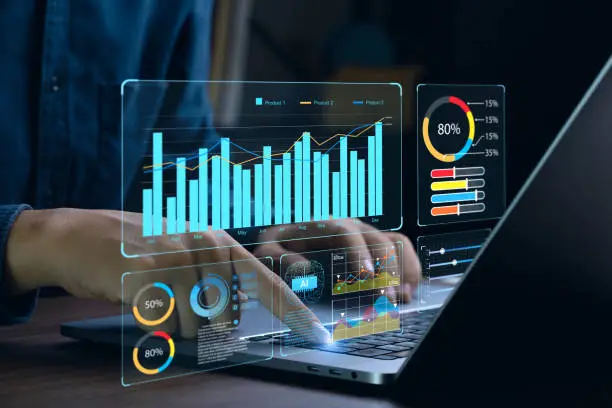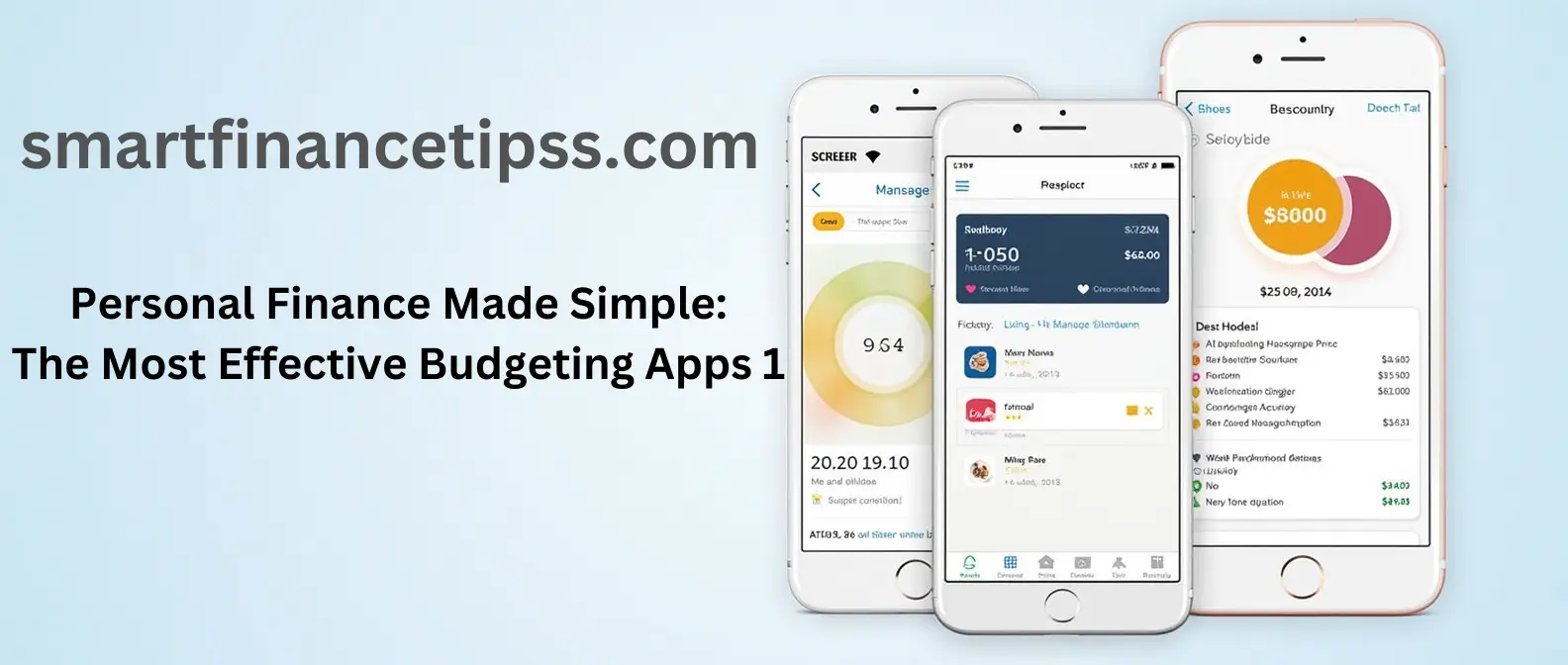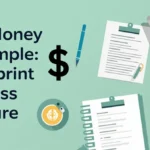The Best Fluffy Pancakes recipe you will fall in love with. Full of tips and tricks to help you make the best pancakes.
Table of Contents
Introduction to Money Management Budgeting Apps
Effective money management is an essential skill that significantly impacts personal finance and overall financial well-being. It encompasses allocating resources wisely, tracking expenses, and making informed decisions regarding income and spending. With the increasing complexity of financial products and services, understanding money management has never been more critical for individuals seeking to improve their financial literacy and security.
At its core, money management involves planning, organizing, and monitoring one’s financial activities. This includes budgeting, setting financial goals, and analyzing spending habits to identify areas for improvement. By taking control of one’s finances, individuals can make better decisions that lead to a healthier financial future. Effective money management provides the foundation for positive financial habits, enabling individuals to save for emergencies, invest for growth, and manage debt more effectively.
Moreover, money management plays a vital role in achieving long-term financial stability. It empowers individuals to navigate unexpected expenses and resist the temptation of impulsive spending. By establishing a budget, individuals can ensure that their essential needs are met while also setting aside funds for leisure activities. This balanced approach allows for a more enjoyable lifestyle without jeopardizing financial security.
The advent of technology has transformed the way individuals manage their finances. Numerous apps are now available to simplify and enhance the money management process, offering features such as expense tracking, budgeting tools, and real-time financial analysis. These applications can be instrumental in promoting accountability and encouraging users to stay within their financial limits. As we delve deeper into this topic, we will explore the best apps specifically designed for effective money management and expense tracking, illustrating how technology can facilitate better financial outcomes.
Benefits of Using Apps for Expense Tracking

In today’s fast-paced digital world, managing personal finances can be a daunting task. However, the advent of apps tailored for expense tracking has revolutionized how individuals approach money management. One of the primary benefits of using these apps is convenience. With applications available on smartphones and tablets, users can access their financial information anytime and anywhere, making it easier to stay on top of their spending.
Furthermore, these apps are designed with user-friendly interfaces, enabling even the least tech-savvy individuals to navigate with ease. Users can quickly input expenses, categorize spending, and visualize their financial activities without the complexities often associated with traditional budgeting methods. This ease of use significantly reduces the time and effort invested in maintaining a budget.
Another notable advantage is the ability to categorize expenses. Users can allocate their spending into various categories, such as groceries, entertainment, and utilities, which provides clarity in understanding where their money is going. This categorization facilitates more informed financial decision-making and helps highlight areas where spending can be reduced.
Moreover, expense tracking apps allow users to monitor their budgets in real-time. By providing instant feedback on spending habits, these tools promote conscientious financial behaviors. Users can set budgets for different expense categories and receive alerts when nearing or exceeding those limits, ultimately encouraging adherence to their financial goals.
Lastly, many expense tracking apps generate detailed reports that illustrate spending patterns over time. These insights can be invaluable for understanding personal financial habits, allowing users to identify trends, and make adjustments to improve their overall financial health. In summary, utilizing expense tracking apps offers a blend of convenience, clarity, and control that empowers users to manage their finances effectively and make informed decisions about their money.
Key Features to Look for in Money Management Apps
In an increasingly digital world, choosing the right money management app can significantly streamline your financial tracking and budgeting efforts. One of the essential features to consider is a robust budgeting tool. This functionality allows users to set financial goals, allocate funds to different categories, and monitor their spending against these budgets in real-time. Effective budgeting tools empower users to make informed decisions based on their financial health.
Another critical aspect is expense categorization. A good money management app should automatically categorize expenses, making it easier for users to identify spending patterns. This feature enables users to see where their money is going and helps them adjust their budgets accordingly. Additionally, customizable categories provide flexibility for users, allowing them to personalize their experience based on unique financial habits.
Bank integration is also vital in any money management software. Seamless integration with bank accounts ensures that users can track their transactions directly within the app. This eliminates the need for manual entry and reduces the chance of errors. Moreover, real-time updates allow users to stay informed about their financial situation, enhancing the overall effectiveness of the app.
User-friendly interfaces cannot be overlooked. An intuitive design ensures that all users, regardless of their tech-savviness, can navigate the app effortlessly. Clear visuals and organized layouts aid in minimizing confusion and optimizing the experience for users looking to manage their finances efficiently.
Moreover, security features are fundamental when handling sensitive financial information. Look for apps that offer two-factor authentication, data encryption, and secure server connections. These features guarantee that personal information remains safeguarded from potential breaches.
Lastly, vigilant customer support options are crucial. Whether it’s through chat, email, or phone support, having access to assistance when needed can significantly enhance the user’s experience. Apps that facilitate easy communication channels can help resolve issues more swiftly and improve user satisfaction.
Best Apps for Money Management and Expense Tracking
In the realm of personal finance, various applications aim to aid users in effective money management and expense tracking. The following is a curated list of some of the best apps available, highlighting their unique features, pricing models, and target audiences.
Mint is a widely recognized app that provides users with a comprehensive overview of their financial status. Its standout feature is the capability to link multiple bank accounts, allowing real-time updates of spending and savings. Mint is free to use, supported by ads, making it an excellent choice for individuals and families looking to manage their finances without a monetary commitment.
YNAB (You Need A Budget) stands out for its proactive approach to budgeting. Users are encouraged to allocate every dollar they earn to a specific category, promoting disciplined spending habits. YNAB operates on a subscription model, with a free trial available for new users. This app is particularly suitable for those who want to establish a robust budgeting framework and is favored by those managing household finances as well as individuals aiming for financial independence.
EveryDollar is designed for those who prefer a straightforward budgeting tool. Its user-friendly interface allows individuals to create budgets easily and track expenses seamlessly. The app offers a free version, although premium features require a subscription. EveryDollar can be particularly beneficial for families seeking to organize their finances without the complexities of more advanced financial software.
Expensify is aimed at business owners and frequent travelers. With features like automated receipt scanning and expense report generation, it simplifies tracking business expenses. Expensify operates on a subscription basis but also offers a free tier for personal use. This app is invaluable for professionals needing to maintain oversight of their business expenditures.
Lastly, PocketGuard is an app designed to help users understand their spending habits. By linking their accounts, this tool shows how much disposable income users have after accounting for bills, goals, and necessities. PocketGuard utilizes a freemium model, making it a suitable option for students and young professionals.
Comparative Analysis of Top Money Management Apps

In today’s digital age, numerous applications aim to assist users in managing their finances effectively. Understanding the diverse functionalities of these money management apps is crucial for selecting the best fit for one’s needs. Here, we analyze five popular money management applications based on their key features, ease of use, customer ratings, and additional services they offer.
1. Mint: A leader in the finance app category, Mint offers comprehensive budgeting capabilities, bill tracking, and credit score monitoring. Its user-friendly interface allows users to connect bank accounts and categorize spending effortlessly. Supported by a significant customer base, Mint enjoys favorable ratings, usually around 4.7 on major platforms.
2. YNAB (You Need A Budget): Focused on proactive budgeting strategies, YNAB encourages users to allocate every dollar purposefully. Though it comes with a learning curve, many appreciate its effectiveness in promoting financial discipline. YNAB typically garners a customer rating of about 4.5, reflecting its loyal user community.
3. PocketGuard: This app simplifies budgeting by showing how much disposable income is available after accounting for bills, goals, and necessities. Its interface is straightforward, making it accessible for users who prefer a simplified view of their finances. PocketGuard usually earns around 4.3 stars in customer ratings.
4. Personal Capital: Bridging budgeting and investment tracking, Personal Capital provides users with insights into their net worth and investment performance. While it may not be as focused solely on budgeting, its dual functionality attracts a dedicated user demographic, often receiving ratings around 4.6.
5. GoodBudget: Utilizing an envelope budgeting system, GoodBudget emphasizes cash management in a digital format. Users value its zero-cost model and straightforward approach to expense tracking. With a rating of about 4.4, GoodBudget appeals particularly to those looking for a traditional budgeting method translated into a modern application.
The above analysis illustrates the strengths and unique offerings of each app. Users must consider personal financial goals and preferred approaches to budgeting when selecting their money management tool.
User Reviews and Feedback
Understanding user experiences plays a crucial role in choosing the right money management and expense tracking applications. Reviews reveal how these tools impact users’ financial literacy and overall management of their finances. Many users highlight the intuitive interfaces of popular apps such as Mint, YNAB (You Need A Budget), and PocketGuard, which facilitate seamless navigation and quick entry of expenses. These features allow users to efficiently monitor their spending, categorize expenses, and set financial goals.
Positive feedback often encompasses the ability of these apps to provide insights into spending patterns. For instance, users have expressed appreciation for the visual representation of their expenses, which helps in identifying unnecessary spending habits. One user remarked, “I was able to cut my monthly dining expenses in half simply by seeing how often I dined out.” Such testimonials indicate how these applications empower individuals through data-driven insights.
Conversely, users have also shared challenges and frustrations. Some noted technical issues, such as app crashes or data syncing problems. For example, a reviewer stated, “While I love the budgeting features, the app frequently loses connection to my bank, which can be frustrating.” Additionally, a segment of users pointed out that certain apps, while effective, can be overwhelming due to their extensive features, making it difficult for those new to financial management to harness their full potential. These mixed reviews offer critical insights into both the strengths and weaknesses of money management apps.
In conclusion, user feedback is invaluable for evaluating the effectiveness of money management and expense tracking applications. By considering both the positive and negative aspects highlighted by real users, potential adopters can make more informed decisions regarding which tools may best suit their financial needs.
Tips for Effective Expense Tracking Using Apps
Effective expense tracking is essential for maintaining financial health, and leveraging mobile applications can significantly enhance this practice. To maximize the benefits of these apps, users should start by setting realistic budgets. This involves analyzing past spending habits and categorizing expenses accurately. By establishing a budget that reflects actual income and expenses, users can better anticipate financial needs and avoid overspending.
Another crucial tip is to regularly update expenses within the app. Consistency is key in expense tracking; failing to log expenses promptly can lead to inaccuracies and a skewed financial picture. Users should set aside a specific time each day or week dedicated to updating their expense records. This routine not only keeps finances transparent but also facilitates informed decision-making. Additionally, many expense tracking apps offer the option to sync with bank accounts, making it easier to capture transactions automatically and reducing the manual entry burden.
The use of alerts and reminders is another effective strategy. Most money management apps provide users with the ability to set notifications for bill due dates, spending limits, or budget recalibrations. By activating these features, individuals can stay ahead of their financial responsibilities and avoid late fees or overspending. Alerts serve as helpful nudges that keep users engaged with their financial goals.
Finally, making the most out of reports generated by these apps can provide valuable insights into spending patterns. Most expense tracking applications offer detailed reports that categorize expenses and highlight trends over time. Users should regularly review these summaries to identify areas for potential savings or adjustments in budgeting. By employing these strategies within expense tracking apps, individuals can gain enhanced control over their finances and ultimately foster a healthier financial future.
Common Mistakes to Avoid in Money Management
Effective money management is crucial for maintaining financial stability and achieving long-term goals. However, many individuals often fall into common pitfalls that hinder their ability to manage their finances effectively. One major mistake is neglecting to review finances regularly. Individuals may set a weekly or monthly schedule to check their accounts and expenses, but once the initial enthusiasm wanes, they may stop this practice. Regular review of finances not only helps in tracking spending habits but also allows users to identify areas where they can cut back. Utilizing money management apps can significantly aid in this process, offering insights and alerts for unusual transactions or overspending.
Another frequent error involves not fully utilizing the features available in financial management applications. Many apps come equipped with a myriad of tools designed to help users optimize their budget and track expenses efficiently. These can include budget creation tools, financial goal setting, and reminders for bill payments. Users should invest time in exploring and understanding these features, ensuring that they have access to all the resources available to them. Failing to take advantage of these functionalities can obstruct users from reaching their financial objectives.
Moreover, underestimating variable expenses is a common mistake that can significantly derail a budget. Unlike fixed costs, variable expenses can fluctuate. Items such as dining out, entertainment, and unexpected repairs can vary greatly from month to month, leading to budget overruns if not adequately planned for. Individuals should approach these expenses with a realistic outlook by analyzing past spending habits and factoring in an appropriate buffer to accommodate any potential increases.
Acknowledging and correcting these common mistakes can greatly enhance one’s ability to engage in effective money management and expense tracking. By adopting a more mindful approach to finances, users can leverage apps designed for this purpose to achieve a more stable financial future.
Conclusion: Empowering Your Financial Future with Apps

In the age of technology, the significance of money management apps has become increasingly pronounced, offering individuals a practical means to track their expenses and take command of their financial futures. The applications discussed throughout this blog post exemplify how digital tools can facilitate budgetary awareness, encouraging users to adopt healthier financial habits. From sophisticated budgeting solutions to user-friendly expense trackers, these tools are designed to cater to diverse financial needs and preferences.
With the right money management app, individuals can gain comprehensive insights into their spending patterns, identifying areas where adjustments can be made to enhance savings and promote financial stability. Moreover, these applications often come equipped with features such as goal-setting capabilities, reminders for bill payments, and reports, which collectively empower users to make informed decisions about their finances. By harnessing the power of technology, users can shift from reactive to proactive management of their financial resources.
As financial literacy becomes an essential skill for navigating today’s economic landscape, the role of money management apps cannot be understated. They serve as valuable allies in the quest for financial well-being, promoting accountability and transparency in how individuals approach their income and spending. Users are encouraged to explore the various apps highlighted in this post, as each offers unique functionalities tailored to different financial objectives.
Taking the first step toward effective money management is crucial for a brighter financial future. By integrating these tools into daily routines, users can cultivate habits that not only enhance financial awareness but also contribute to long-term fiscal health. As technology continues to evolve, those who leverage these advancements will likely find themselves better equipped to navigate their financial journeys successfully.









